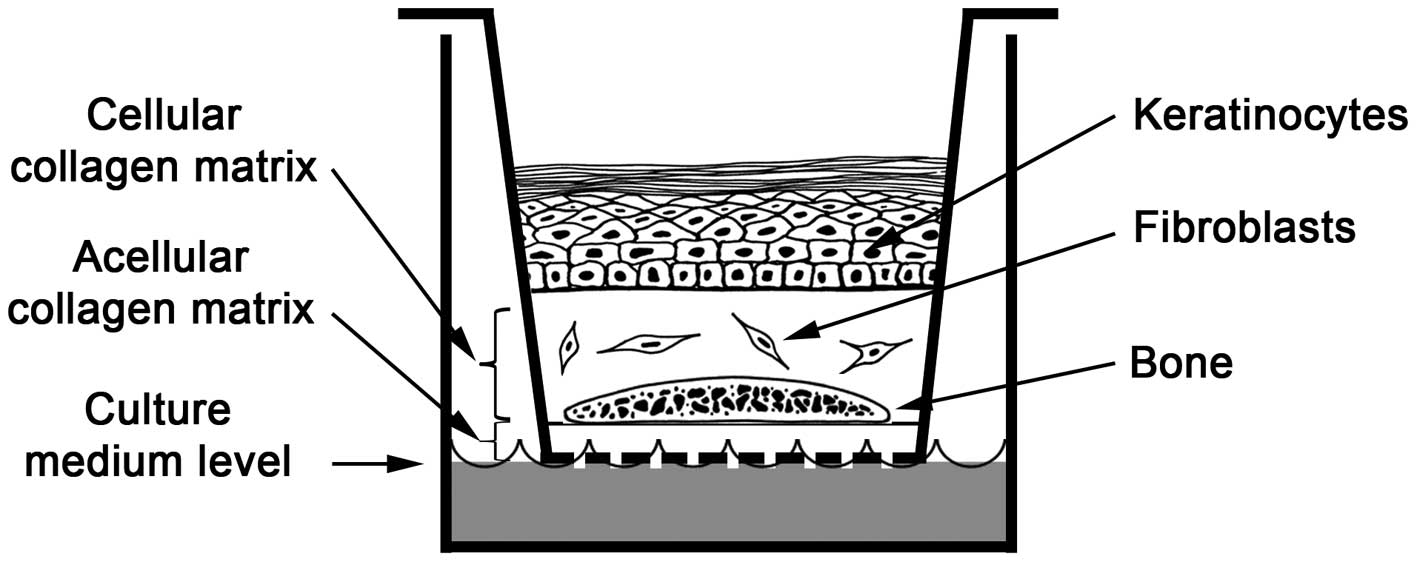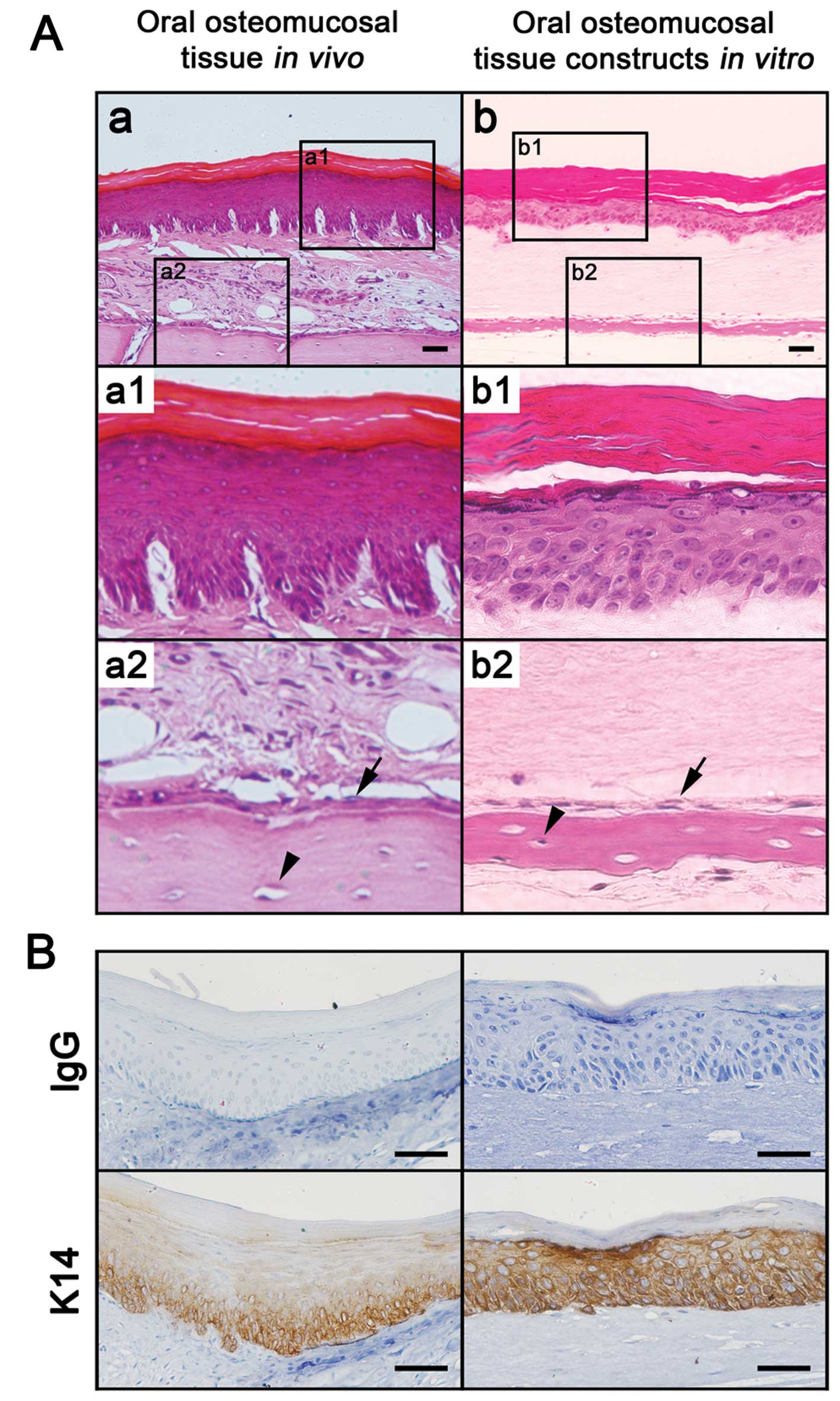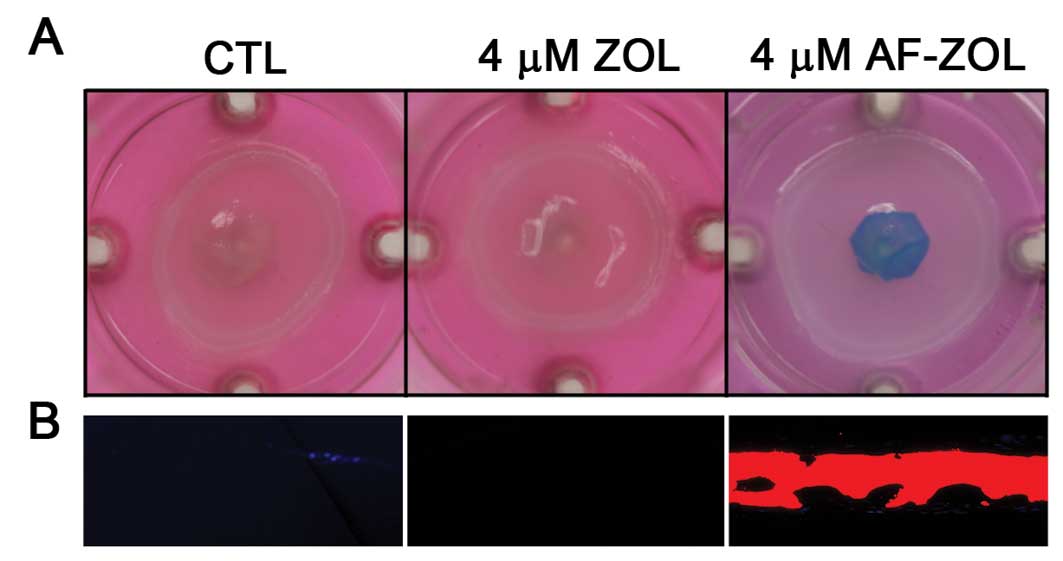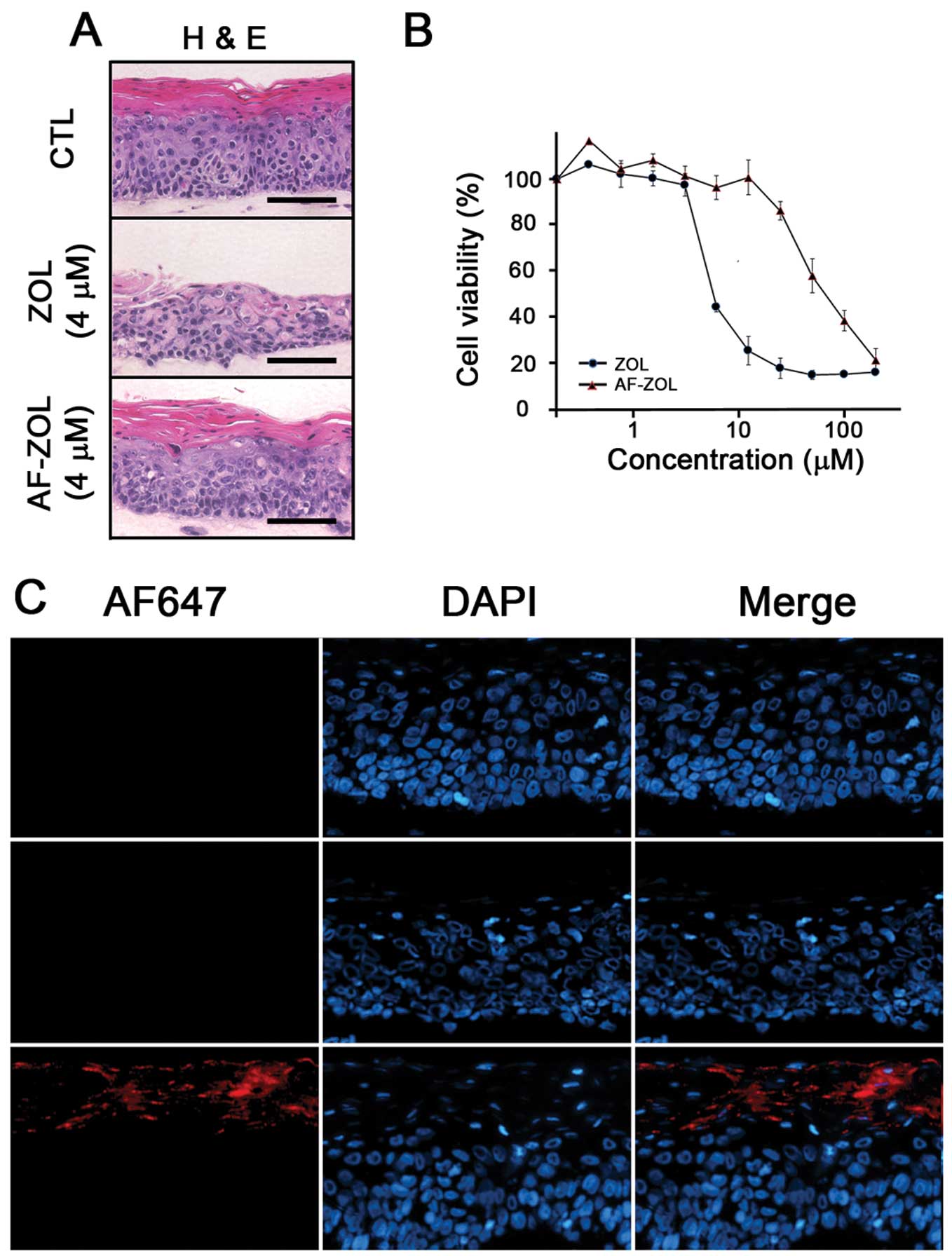|
1
|
Black DM, Delmas PD, Eastell R, et al:
Once-yearly zoledronic acid for treatment of postmenopausal
osteoporosis. N Engl J Med. 356:1809–1822. 2007.
|
|
2
|
Lyles KW, Colon-Emeric CS, Magaziner JS,
et al: Zoledronic acid and clinical fractures and mortality after
hip fracture. N Engl J Med. 357:1799–1809. 2007. View Article : Google Scholar : PubMed/NCBI
|
|
3
|
Healy JH and Brown HK: Complications of
bone metastases: surgical management. Cancer. 88:2940–2951. 2000.
View Article : Google Scholar : PubMed/NCBI
|
|
4
|
Brufsky AM: Cancer treatment-induced bone
loss: pathophysiology and clinical perspectives. Oncologist.
13:187–195. 2008. View Article : Google Scholar : PubMed/NCBI
|
|
5
|
Abrahamsen B: Adverse effects of
bisphosphonates. Calcif Tissue Int. 86:421–435. 2010. View Article : Google Scholar
|
|
6
|
Van Holten-Verzantvoort AT, Kroon HM,
Bijvoet OL, et al: Palliative pamidronate treatment in patients
with bone metastases from breast cancer. J Clin Oncol. 11:491–498.
1993.
|
|
7
|
De Groen PC, Lubbe DF, Hirsch LJ, et al:
Esophagitis associated with the use of alendronate. N Engl J Med.
335:1016–1021. 1996.
|
|
8
|
Rubegni P and Fimiani M: Images in
clinical medicine. Bisphosphonate-associated contact stomatitis. N
Engl J Med. 355:e252006. View Article : Google Scholar : PubMed/NCBI
|
|
9
|
Reid IR and Cornish J: Epidemiology and
pathogenesis of osteonecrosis of the jaw. Nat Rev Rheumatol.
8:90–96. 2011.PubMed/NCBI
|
|
10
|
Ruggiero SL, Dodson TB, Assael LA, et al:
American Association of Oral and Maxillofacial Surgeons position
paper on bisphosphonate-related osteonecrosis of the jaws-2009
update. J Oral Maxillofac Surg. 67:2–12. 2009. View Article : Google Scholar : PubMed/NCBI
|
|
11
|
Kim RH, Lee RS, Williams D, et al:
Bisphosphonates induce senescence in normal human oral
keratinocytes. J Dent Res. 90:810–816. 2011. View Article : Google Scholar : PubMed/NCBI
|
|
12
|
Van den Wyngaert T, Huizing MT and
Vermorken JB: Bisphosphonates and osteonecrosis of the jaw: cause
and effect or a post hoc fallacy? Ann Oncol. 17:1197–1204.
2006.
|
|
13
|
Levin L, Laviv A and Schwartz-Arad D:
Denture-related osteonecrosis of the maxilla associated with oral
bisphosphonate treatment. J Am Dent Assoc. 138:1218–1220. 2007.
View Article : Google Scholar : PubMed/NCBI
|
|
14
|
Goldman ML, Denduluri N, Berman AW, et al:
A novel case of bisphosphonate-related osteonecrosis of the torus
palatinus in a patient with metastatic breast cancer. Oncology.
71:306–308. 2006. View Article : Google Scholar : PubMed/NCBI
|
|
15
|
Roelofs AJ, Coxon FP, Ebetino FH, et al:
Fluorescent risedronate analogues reveal bisphosphonate uptake by
bone marrow monocytes and localization around osteocytes in vivo. J
Bone Miner Res. 25:606–616. 2010. View Article : Google Scholar : PubMed/NCBI
|
|
16
|
Roelofs AJ, Stewart CA, Sun S, et al:
Influence of bone affinity on the skeletal distribution of
fluorescently labeled bisphosphonates in vivo. J Bone Miner Res.
27:835–847. 2012. View Article : Google Scholar : PubMed/NCBI
|
|
17
|
Park NH, Min BM, Li SL, et al:
Immortalization of normal human oral keratinocytes with type 16
human papillomavirus. Carcinogenesis. 12:1627–1631. 1991.
View Article : Google Scholar : PubMed/NCBI
|
|
18
|
Sun S, Błażewska KM, Kashemirov BA, et al:
Synthesis and characterization of novel fluorescent
nitrogen-containing bisphosphonate imaging probes for bone active
drugs. Phosphorus Sulfur Silicon Relat Elem. 186:970–971. 2011.
View Article : Google Scholar
|
|
19
|
Klausner M, Ayehunie S, Breyfogle BA, et
al: Organotypic human oral tissue models for toxicological studies.
Toxicol In Vitro. 21:938–949. 2007. View Article : Google Scholar : PubMed/NCBI
|
|
20
|
Garlick JA, Parks WC, Welgus HG and
Taichman LB: Re-epithelialization of human oral keratinocytes in
vitro. J Dent Res. 75:912–918. 1996. View Article : Google Scholar
|
|
21
|
Andrei G, Duraffour S, Van den Oord J and
Snoeck R: Epithelial raft cultures for investigations of virus
growth, pathogenesis and efficacy of antiviral agents. Antiviral
Res. 85:431–449. 2010. View Article : Google Scholar : PubMed/NCBI
|
|
22
|
Liu J, Bian Z, Kuijpers-Jagtman AM and Von
den Hoff JW: Skin and oral mucosa equivalents: construction and
performance. Orthod Craniofac Res. 13:11–20. 2010. View Article : Google Scholar : PubMed/NCBI
|
|
23
|
Kim RH, Mehrazarin S and Kang MK:
Therapeutic potential of mesenchymal stem cells for oral and
systemic diseases. Dent Clin North Am. 56:651–675. 2012. View Article : Google Scholar : PubMed/NCBI
|
|
24
|
Coxon FP, Thompson K and Rogers MJ: Recent
advances in understanding the mechanism of action of
bisphosphonates. Curr Opin Pharmacol. 6:307–312. 2006. View Article : Google Scholar : PubMed/NCBI
|
|
25
|
Brenner AI, Koshy J, Morey J, et al: The
bone scan. Semin Nucl Med. 42:11–26. 2012. View Article : Google Scholar
|
|
26
|
Peller PJ, Ho VB and Kransdorf MJ:
Extraosseous Tc-99m MDP uptake: a pathophysiologic approach.
Radiographics. 13:715–734. 1993. View Article : Google Scholar : PubMed/NCBI
|
|
27
|
Proksch E, Brandner JM and Jensen JM: The
skin: an indispensable barrier. Exp Dermatol. 17:1063–1072. 2008.
View Article : Google Scholar : PubMed/NCBI
|
|
28
|
Rogers MJ, Crockett JC, Coxon FP, et al:
Biochemical and molecular mechanisms of action of bisphosphonates.
Bone. 49:34–41. 2011. View Article : Google Scholar
|
|
29
|
van Beek E, Pieterman E, Cohen L, et al:
Nitrogen-containing bisphosphonates inhibit isopentenyl
pyrophosphate isomerase/farnesyl pyrophosphate synthase activity
with relative potencies corresponding to their antiresorptive
potencies in vitro and in vivo. Biochem Biophys Res Commun.
255:491–494. 1999.
|
|
30
|
Luckman SP, Hughes DE, Coxon FP, et al:
Nitrogen-containing bisphosphonates inhibit the mevalonate pathway
and prevent post-translational prenylation of GTP-binding proteins,
including Ras. J Bone Miner Res. 13:581–589. 1998. View Article : Google Scholar
|
|
31
|
Senaratne SG, Pirianov G, Mansi JL, et al:
Bisphosphonates induce apoptosis in human breast cancer cell lines.
Br J Cancer. 82:1459–1468. 2000. View Article : Google Scholar : PubMed/NCBI
|
|
32
|
Goffinet M, Thoulouzan M, Pradines A, et
al: Zoledronic acid treatment impairs protein geranyl-geranylation
for biological effects in prostatic cells. BMC Cancer. 6:602006.
View Article : Google Scholar : PubMed/NCBI
|
|
33
|
Ory B, Moriceau G, Trichet V, et al:
Farnesyl diphosphate synthase is involved in the resistance to
zoledronic acid of osteosarcoma cells. J Cell Mol Med. 2:928–941.
2008. View Article : Google Scholar
|
|
34
|
Elias PM: Stratum corneum defensive
functions: an integrated view. J Invest Dermatol. 125:183–200.
2005.PubMed/NCBI
|
|
35
|
Suri S, Monkkonen J, Taskinen M, et al:
Nitrogen-containing bisphosphonates induce apoptosis of Caco-2
cells in vitro by inhibiting the mevalonate pathway: a model of
bisphosphonate-induced gastrointestinal toxicity. Bone. 29:336–343.
2001. View Article : Google Scholar
|
|
36
|
Pazianas M and Abrahamsen B: Safety of
bisphosphonates. Bone. 49:103–110. 2011. View Article : Google Scholar
|
|
37
|
van Staa T, Abenhaim L and Cooper C: Upper
gastrointestinal adverse events and cyclical etidronate. Am J Med.
103:462–467. 1997.PubMed/NCBI
|
|
38
|
Graham DY: What the gastroenterologist
should know about the gastrointestinal safety profiles of
bisphosphonates. Dig Dis Sci. 47:1665–1678. 2002. View Article : Google Scholar : PubMed/NCBI
|
|
39
|
Landesberg R, Cozin M, Cremers S, et al:
Inhibition of oral mucosal cell wound healing by bisphosphonates. J
Oral Maxillofac Surg. 66:839–847. 2008. View Article : Google Scholar : PubMed/NCBI
|
|
40
|
Scheper MA, Badros A, Chaisuparat R, et
al: Effect of zoledronic acid on oral fibroblasts and epithelial
cells: a potential mechanism of bisphosphonate-associated
osteonecrosis. Br J Haematol. 144:667–676. 2009. View Article : Google Scholar : PubMed/NCBI
|
|
41
|
Arai N, Inoue S, Tomihara K, et al: In
vitro synergistic effects of zoledronic acid and calcium on
viability of human epithelial cells. Oral Dis. 19:200–205. 2012.
View Article : Google Scholar : PubMed/NCBI
|


















